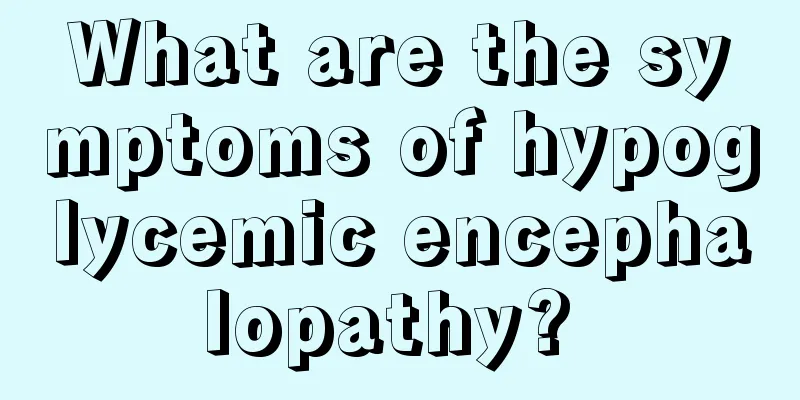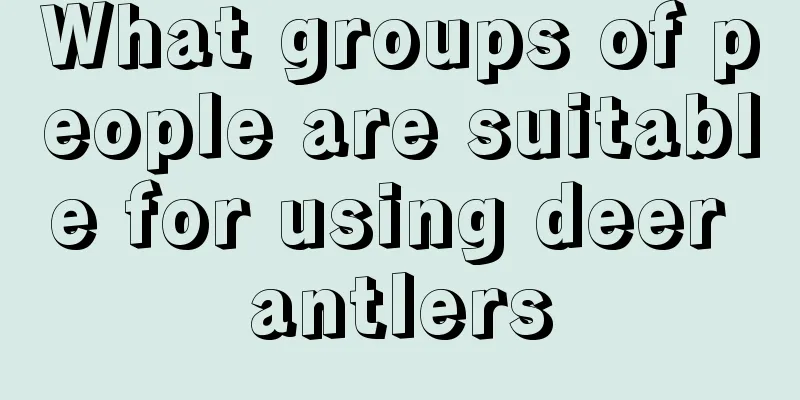What are the symptoms of hypoglycemic encephalopathy?

|
Hypoglycemic encephalopathy is mainly caused by damage to brain tissue due to severe hypoglycemia. Common clinical symptoms include sweating, tremors or blurred vision, and pale complexion. Therefore, people who often show these symptoms must pay attention to them. 1. Pathology Glucose is the main source of energy for the brain, especially the cerebrum, but the ability of brain cells to store glucose is very limited and can only maintain the energy needs of brain activity for a few minutes. Therefore, the main source of energy for the brain is blood sugar. Prolonged severe hypoglycemia can seriously damage brain tissue. In the early stages of sugar deficiency in the brain tissue, congestion and multiple hemorrhagic ecchymoses may occur; then, due to damage to the Na+-K+ pump in the brain cell membrane, a large amount of Na+ enters the brain cells, followed by cerebral edema and punctate necrosis of the brain tissue; in the late stages, nerve cells necrotize and disappear, resulting in softening of the brain tissue. Different parts of the nervous system have different sensitivities to hypoglycemia. The cerebral cortex, hippocampus, cerebellum, caudate nucleus and globus pallidus are the most sensitive, followed by the cranial nerve nuclei, thalamus, hypothalamus and brainstem. The spinal cord is less sensitive. The damage caused by hypoglycemia to the brain is similar to that caused by ischemic brain damage, but not exactly the same. However, severe hypoglycemia is often accompanied by a decrease in the brain's oxygen uptake rate, which makes the brain less tolerant to hypoxia and can further aggravate the damage of hypoglycemia to the brain. 2. Clinical manifestations 1. Sympathetic nerve excitement symptoms The main symptoms include sweating, trembling, blurred vision, hunger, weakness and tension, pale complexion, palpitations, nausea, vomiting and cold limbs. 2. Symptoms of brain hypoxia and sugar deficiency The main symptoms are headache, dizziness and forgetfulness. Mental disorder, gradual loss of orientation and memory, fear, panic, hallucinations and mania, etc. There may be clonic, choreiform or childish movements, tachycardia, mydriasis, positive pyramidal tract signs, etc. Patients may experience epileptic symptoms, confusion, drowsiness, or even coma, and may even experience deep coma, decerebrate rigidity, disappearance of various reflexes, shallow and weak breathing, decreased blood pressure, and pupil constriction. If the brain tissue is in a severe hypoglycemic state for a long time, it will be difficult for the patient to recover. Patients often suffer from symptoms such as memory loss, intellectual impairment, mental disorder or personality change. Unexplained idiopathic (or functional) hypoglycemia often occurs in children around 10 years old. |
<<: Treatment method for vascular headache, this method is so effective
>>: Chicken gizzard skin is so effective in treating gallstones
Recommend
What to do if uterine cancer bleeds continuously
Because of the erosion of cancer cells, the body ...
How to treat itching in the ears? Experts answer your questions
Everyone will experience itchy ears. Although itc...
The stool contains pus and blood
Thick blood in the stool is also called bloody an...
What medicine should I take for orbital pain after radiotherapy for nasopharyngeal carcinoma
What medicine should I take for orbital pain afte...
Health alert: Five symptoms remind you that it’s time to detoxify your body!
Body detoxification is the process of expelling s...
What tea is the most detoxifying?
Nowadays, we have very high requirements for heal...
Is it stomach cancer if I have stomach pain when I lie down and then sit up to relieve it?
Generally speaking, if you experience stomach pai...
What is the cause of eyeball hemorrhage and what disease is it related to
If bleeding occurs in the eyeball, everyone must ...
What are the metastatic pathways of lung cancer? Pay attention to these three parts
The onset of lung cancer is already very frighten...
Men should also check their breasts regularly
The direct cause of breast cancer is the appearan...
What disease is the symptom of green snot
A runny nose is a very common problem, and normal...
What are the methods for diagnosing lung cancer? Seven major examination methods for lung cancer
Lung cancer is a very malignant tumor. Its incide...
The correct way to use aloe vera gel to remove scars
Aloe vera gel is a substance extracted from aloe ...
How to remove moisture by hot compress with coarse salt
As we all know, there is varying degrees of moist...
What is the cure rate of rectal cancer
Since the early symptoms of rectal cancer are ver...









